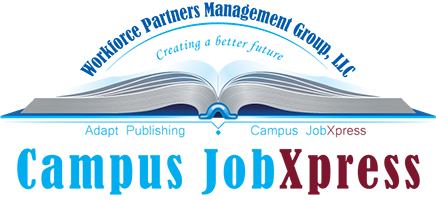
by cjxpadmin | Mar 1, 2013 | Job Readiness, This Issue's FEATURE
By Sharon Rector
“Don’t ever feel that you are the only one to ever have done something silly or said something crazy. We all do it! Yours truly… especially!
I had not ever had any kind of experience in an office environment, when I accepted my first secretarial position. It was very new to me, and I was just a kid fresh out of business college trying to make it in the “real world.” During my first week on the job, I made many, many mistakes. I would fill my trash can every day with mistakes! One of the bosses noticed my trash can one day and told me that at the end of every day, they had someone go through everyone’s trash and make notes of all the mistakes they found there. He said they would deduct pay from your paycheck according to the number of mistakes that were found.
Naive as I was, I believed him! I carried my trash home for a week before I found out he was just ‘pulling my leg.’ Yoli”
Over the course of this year, we are going to concentrate on the varying aspects of the term “professional presence.” Get familiar with the essence of the term so that you are knowledgeable of what it is, how you attain it, and how you maintain it throughout your chosen career path. 
What does the term “professional presence” mean? According to the dictionary, professional presence refers to a dynamic blend of poise, self-confidence, self-control, and style that enables a person to command respect in any situation—especially on your new job.
Professional presence includes how you appear physically, how you dress for work, the tone of your voice, facial expressions, and even your handshake. It entails how you communicate with others and how you behave in the midst of problems and issues.
In the article “Developing a Professional Presence,” it is reiterated that once a professional presence is acquired, it will permit one to project a confidence that others can quickly perceive the first time you meet. And to project confidence, you must feel confidence.
The article also highlights that though one may present excellent credentials, a boss is more likely to choose (out of possible candidates) the one who has style as well as substance.
Let’s imagine that you have just been through a grueling panel interview conducted by individuals who really have no perception of  YOU — the real you; what you know and what you don’t know! How do you survive the interview? Once hired, how do you maintain your confidence and poise on the job? Let’s take a look at some strategies that may help you during this period.
YOU — the real you; what you know and what you don’t know! How do you survive the interview? Once hired, how do you maintain your confidence and poise on the job? Let’s take a look at some strategies that may help you during this period.
Strategy Number 1: (This is my personal favorite). Say that you have been hired. Hooray! Great job! Now how do you proceed? My advice is to tread lightly. Never get too personal too quickly with those who will be your fellow workers. Your inner-most aspects of your life, at this moment, are just that— personal! Your primary function on your new job is not to make friends, but to showcase to your employer the skills, knowledge, and talents you highlighted during your interview.
Your employer is operating a business, not a social club! According to Author Helen Wilkie in “How Do You Develop Professional Presence?” she clearly states that you do want to develop and cultivate a respectful relationship with your peers, those above you on the organizational level, those below you, or the clients. Show that you can get along with others by exuding the best of you! But never forget that people do spread gossip and untruths and unpleasant rumors about their colleagues. In your professional life, it is probably better to maintain your credibility by showing that you are trustworthy and your ability to rise above the fray.
Strategy Number 2: Realize and accept the fact that if you don’t know, you just don’t know! Always be upfront with your employer  about mistakes or your need to take time and research problems you have to tackle. By doing so, this will show your employer that you have initiative and pride in your work.
about mistakes or your need to take time and research problems you have to tackle. By doing so, this will show your employer that you have initiative and pride in your work.
Never proceed on a project attempting to muddle your way through your work. Although it is your responsibility to acknowledge your skills and talent, there is no shame in declaring you have hit a road block temporarily! Admit your mistake and maintain your confidence and composure establishing with your employer that you have worth and value to the organization and that you intend to prove it!
Strategy Number 3: Finally, whatever you do, stay disciplined! Maintain your confidence and competence as you are now in the process of “image building!” You are establishing for yourself and those who work around you your brand.
Image is a term that could be defined as establishing your qualities, competence, and attitude; everything that is inherent to you, but it is also the picture that people around you will remember.
Helen Wilkie in “How Do You Develop a Professional Prescience” believes that you need to cultivate a reputation for doing things well, getting your work done correctly and completely on time, and getting along well with others. It is that professional presence that will be the strongest force in helping you climb the ladder of success.
In closing, let me quote two statements on professional presence. The first is by David McNally and Karl Speaks.
“Developing a strong personal brand involves all the little ways in which you express your feelings about yourself and present to others.”
~ David McNally & Karl Speak
This last quote is taken from Susan Bixler and Nancy Nix-Rice, authors of “The New Professional Image.”
“Books are judged by their covers, houses are appraised by their curb appeal, and people are initially evaluated on how they choose to dress and behave. In a perfect world, this is not fair, moral, or just. What’s inside should count a great deal more. And eventually it usually does, but not right away…..”
Credits:
1) Wilkie, Helen, “How Do You Develop a Professional Presence?” How Do You Develop a Professional Presence. 28 Apr 2007. Ezinearticles. com 19 Feb. 2013
http://ezinarticles.com/? How-Do-You-Develop-a-Professional-Prescience?&ID=544373
2) Resource.mcc.neb.edu/hmrl/files/hmrl/Metro NHMRL Text/p52-99 pdf
- Total Person Insight. Susan Bixler and Nancy Nix-Rice, “The New Professional Image.” Taken from article “Developing a Professional Presence, resource.mcc.neb.edu/hmrl/files/hmrl/Metro NHMRL. pp 53 & 56.
Upcoming Article for Month of April: Professional Presence: “Dressing Smart and Dressing the Part” △
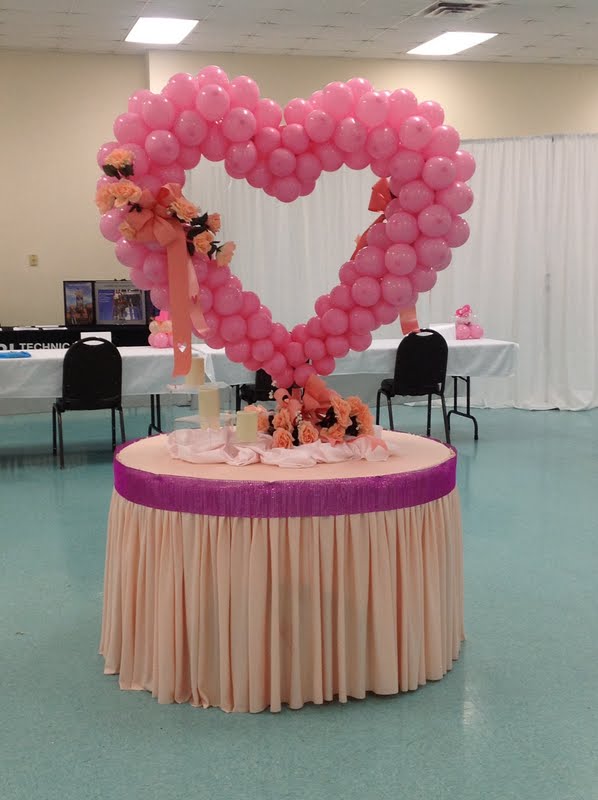
by cjxpadmin | Feb 27, 2013 | Job Search, This Issue's FEATURE
By Melvin Collins, Jr.
The Job Fair and Showcase for February, “My Heart Is Set On A Job,” was a huge hit with employers and job seekers alike at The Red 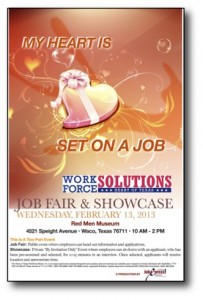 Men Museum sponsored by The Heart Of Texas Workforce Solutions Center in Waco, Texas.
Men Museum sponsored by The Heart Of Texas Workforce Solutions Center in Waco, Texas.
The setting was plain and elegantly simple, the employers came with guarded expectations. “You never know what to expect,” said one employer, “it’s a job fair and a showcase at the same time.” This is the first time the two types of job events were combined like this. “How is this suppose to 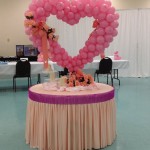 work?” everyone continued to ask as the day grew closer and closer leading up to the event.
work?” everyone continued to ask as the day grew closer and closer leading up to the event.
Well, it’s works this way, the Job Fair portion of the event allows job seekers who have an interest in talking to employers about possible jobs to attend. Employers come with materials, goodies, brochures and applications to hand out. They will take resumes and accept completed applications right there on the spot. This will give them time to review resumes and applications at their home base. There are no restrictions on who can talk to these employers and many, if not most, will not qualify for a position with the employer. The ratio can be more than 9 to 1 of not meeting the minimum requirements. That means that 9 of 10 people who talk to the employer have no chance of getting a job.
Now to the Showcase, each and every participant is pre-screened for minimum qualifications and if they meet these minimum 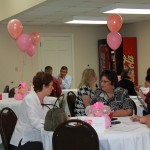
 qualifications, they are scheduled to meet with our staff for an interview. After being interviewed, the participant is told whether they meet the employer’s requirements and if they have an interest in the position, they are scheduled for the Showcase. Employers, if time permits, may get a copy of the scheduled participants’ resumes for them to review in advance. On the day of the Showcase, the employer comes to a private area to receive scheduled participants. Each participant is allowed a set amount of time for a face-to-face conversation with the employer. This is actually an interview! After this conversation, the employer will tell the participant what the next step will be for them, perhaps a second interview or a background check. The ratio of positive results is more than thirty percent getting a job with that employer. That is 1 out of 3 people getting a job.
qualifications, they are scheduled to meet with our staff for an interview. After being interviewed, the participant is told whether they meet the employer’s requirements and if they have an interest in the position, they are scheduled for the Showcase. Employers, if time permits, may get a copy of the scheduled participants’ resumes for them to review in advance. On the day of the Showcase, the employer comes to a private area to receive scheduled participants. Each participant is allowed a set amount of time for a face-to-face conversation with the employer. This is actually an interview! After this conversation, the employer will tell the participant what the next step will be for them, perhaps a second interview or a background check. The ratio of positive results is more than thirty percent getting a job with that employer. That is 1 out of 3 people getting a job.
The Showcase involves much more work for us, but the reward for the employer, the jobseeker and us is very much worth the effort.
This job event was one of the best that has occurred in recent memory. Everyone was orderly, many were dressed for the occasion and there were very few onlookers on, that is, people who just come to accompany the job seeker.
We did receive comments through our Job Club about the look of some of the job seekers. There were comments from some of our Job Club members such as the following:
“I went to the Job Fair today and was really pretty shocked by the appearance of many of the applicants. I saw wet hair, messy hoodies, lots and lots of t-shirt and jeans ensembles and wrinkled clothes galore.”
“First impressions are important.”
“Personal grooming is even more important.”
“Good hygiene is as important as dressing appropriately for the job. But, being overdressed for the position can also be a negative thing. I say, dress for the occasion.”
“Dressing the part is certainly important! I saw lots of people there today who were NOT dressed for potential job interviews and it showed! I saw people not only in jeans, t-shirts, sweats, but also with rags on their heads. You don’t go to job interviews like that!”
These are but a few of the comments we received about the appearance of some of the job seekers. I must say that our Job Club members came and represented well. And, there were members of my Job-Readiness Class who looked amazing. When asked, where did you get such a great looking outfit, one person said “Goodwill.” I was so proud of her. She looked great, had a beautiful smile on her face, chose a great looking professional look and did not spend a lot of money to make it all work for her.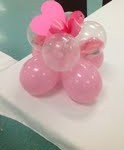
With her telling us that she got her outfit from Goodwill tells us all that we do not have to spend a lot of money to look right for an interview or for just looking for a job at a job fair.
There were thirty employers participating at both the Job Fair and Showcase. All comments, thus far, have been excellent and the HOT Workforce Solutions will be planning more events in the upcoming weeks.
If you have comments or suggestions, we are alway happy to hear from you. Please login a comment in the section below this article. Thanks for your participation! △

by cjxpadmin | Feb 27, 2013 | Job Readiness, This Issue's FEATURE
by Sheena Williams
“March winds and April showers bring forth May flowers.”
However, before we can get to the flowers, we need to get through the wind and the showers! Spring is in the air, but so are storm clouds, high winds, and tornadoes. So, to make sure that you and yours are safe this weather season we have listed some safety tips to get you to the May flowers despite the March winds and April showers.
Tornadoes
Most people will tell you that during a tornado, you are safest in an underground shelter or a reinforced room with no windows. But  what do you do in the event that you don’t have either of those options? You can:
what do you do in the event that you don’t have either of those options? You can:
In homes or smaller buildings, find the northeast corner of a basement. Or if that is not an option, go to the smallest, most-interior room on the lowest floor, such as a closet or bathroom. Cover yourself to protect your body from flying objects.
- In schools, hospitals, factories or shopping centers, go to the smallest, most-interior room or hallway on the lowest floor. Stay away from glass or areas with wide roofs such as auditoriums and warehouses. Crouch down and cover your head.
- In high-rise buildings, go to the smallest, most-interior room or hallway. Stay away from exterior walls and windows.
- If you are in a car or mobile home… abandon them immediately! Cars and mobile homes provide no protection from tornado winds. Leave them and go to a substantial structure or designated tornado shelter.

- It used to be that if you were caught out in the open, you were to find an overpass or bridge, but now it is said not to do that. They provide little shelter and have proved to be some pretty deadly options.
- If caught in the open, lie flat in a culvert, ditch or depression and cover your head.
Lightning
So, you’re safe in your own home watching the lightning show safely from your living room, hmm? Well, please keep in mind that at any given time, there are over 2,000 thunderstorms on the planet that produce 44 flashes of lightning. This means that if you see a thunderstorm, it behooves you to take cover. During a thunder storm, here are a few tips to remember:
- If you feel your hair standing on end, squat with your head between your knees. Do not lie flat!
- Avoid using the telephone or other electrical appliances. Let’s say you do bite the bullet, wave off the impending storm, and get on your PC anyway. You open yourself up to a lot of problems like power surges, and possibly being electrocuted. We can’t tell you not to do it, but we strongly suggest that if you have to get on to an electronic device, please use your cell phone, tablet, or lap top; that way, you can unplug the device away from the wall and continue to use it.

- Do not take a bath or shower or stand near plumbing. If you are boating or swimming, get out of the water and move to a safe shelter on land as quickly as possible. This sounds pretty self-explanatory, but there are a large number of people who will hop in the shower to get squeaky clean or decide to take their loved ones out for a swim when a storm hits. This is definitely not the smartest or safest choice as water attracts and is a conduit for electricity. Please be careful.
- Seek shelter in a sturdy building. A hard-top automobile can also offer protection. If you are in a
 wooded area, seek shelter under a thick growth of relatively small trees. However, avoid isolated trees or other tall objects, water, fences, convertible cars, tractors and motorcycles.
wooded area, seek shelter under a thick growth of relatively small trees. However, avoid isolated trees or other tall objects, water, fences, convertible cars, tractors and motorcycles.
Flash Floods
They can occur anywhere, along rivers or creeks, in low water crossings or in a dry stream bed. They can occur during any month and at any time during the day. In fact, flash floods often occur at night when it is difficult to find an escape route. Flash floods can be deceptive, and they develop really fast. Flood waters are likely deeper and moving faster than you think. Everyone, especially children, should stay away from flooded creeks, streams or drainage ditches. Swiftly flowing water can quickly sweep away even the strongest swimmers. You should also know to:
- Leave your vehicle immediately if it stalls in flood waters. Move to higher ground if you can do so safely. Avoid low water
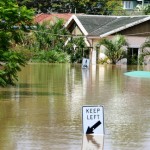 crossings and use alternate routes to avoid flood prone areas.
crossings and use alternate routes to avoid flood prone areas.
- Most cars and light trucks will begin to float in as little as 12 inches of water. Act quickly; rising waters can make vehicle doors difficult to open.
- Soggy banks can collapse, dumping you into flood waters. So make sure to stay on firm land and embankments.
Hurricanes
 There is a lot that goes into protecting yourself from a hurricane. There are many things to do in order to prepare, during and after. It has been advised that we give you the link to a hurricane safety site as opposed to listing to do’s here: http://hurricanesafety.org/
There is a lot that goes into protecting yourself from a hurricane. There are many things to do in order to prepare, during and after. It has been advised that we give you the link to a hurricane safety site as opposed to listing to do’s here: http://hurricanesafety.org/
Safety Sites
http://www.nws.noaa.gov/safety.php
http://www.weather.gov/safety
https://dps.mn.gov/divisions/hsem/weather-awareness-preparedness/Pages/default.aspx
http://www.weatherwizkids.com/
△
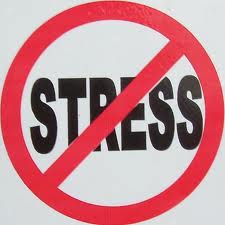
by cjxpadmin | Feb 27, 2013 | Job Readiness, This Issue's FEATURE
Excerpt from Life Transitions, Managing Change
Creating Your Future
It has been said the path to your greatest personal growth is through your problems. You are invited to embrace your problems for  unless you have them, they will have you. There’s a huge difference between the two. You will always have problems. Life is a puzzle. The difference between someone who suffers from their problems and someone who learns and grows from them is in how you take them on. Your future will depend entirely on how you deal with your problems.
unless you have them, they will have you. There’s a huge difference between the two. You will always have problems. Life is a puzzle. The difference between someone who suffers from their problems and someone who learns and grows from them is in how you take them on. Your future will depend entirely on how you deal with your problems.
Taking a New Approach — From Reaction to Creation
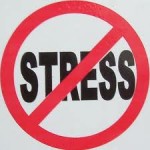 It is normal, understandable, and human to react negatively to the difficult times you might face. However, you want to be very clear that the stress and suffering you have is a result of how you choose to react. It is also possible to take on your problems with a minimum stress. If you choose to create rather than react, perhaps, there will be no suffering at all. It will be helpful if you can envision the whole chain of reactions, which shape your usual reaction to things. The goal is to turn reaction into creation. But first, look at the flow as it usually occurs.
It is normal, understandable, and human to react negatively to the difficult times you might face. However, you want to be very clear that the stress and suffering you have is a result of how you choose to react. It is also possible to take on your problems with a minimum stress. If you choose to create rather than react, perhaps, there will be no suffering at all. It will be helpful if you can envision the whole chain of reactions, which shape your usual reaction to things. The goal is to turn reaction into creation. But first, look at the flow as it usually occurs.
Circumstances
For most people, circumstances determine how they feel and operate in life. If things are pretty good, they feel good. If something  breaks down, they get upset. If you live this way, your experience of life must be like a roller coaster because things go from good to bad and bad to good on a regular basis. For most people, there are always enough circumstances to make life tough, if not downright stressful. You have taken the first step in shaping how you react to circumstances by choosing how you view your own circumstances. This is the first step in shifting out of reaction. Let’s look at a flow chart and see how important this step really can be.
breaks down, they get upset. If you live this way, your experience of life must be like a roller coaster because things go from good to bad and bad to good on a regular basis. For most people, there are always enough circumstances to make life tough, if not downright stressful. You have taken the first step in shaping how you react to circumstances by choosing how you view your own circumstances. This is the first step in shifting out of reaction. Let’s look at a flow chart and see how important this step really can be.
The Flow Chart – Reaction
(Start from the bottom to see the reaction sequence.)
Outcomes and Results
(Eventually our future will come from the actions we take or don’t take regarding the circumstances we are dealing with.)
Behaviors
(Actions we undertake, things we do or don’t do about circumstances, all stem from what we feel. Our emotions are our motivators. Being angry, sad, or depressed are not always great motivators.)
Emotions
(Attitude and thoughts bring up feelings. Emotions hold the energy for what we feel and what we will do. If we react negatively to our circumstances, then, stress eats at us. Every time we run the upsetting thoughts through our head, we feel those same upsetting emotions.)
Attitude
(Attitude is a gathering of thoughts, conversations, and agreements. What I think is right and true becomes the way I think about the situation. If my reaction is negative, then, my initial attitude will be negative also.)
Interpretation
(We have an immediate reaction: Is this going to be good or bad for me? The interpretation that circumstances are bad causes a negative reaction.)
Circumstances
(Things that matter enough to cause us to react such as no job, financial problems, kid(s) in trouble, or transportation issues.)
Learning A Better Way
You can see from the flow chart that our response to stressful circumstances is usually determined by the reactions we have to them. This begins with our basic interpretation of events, whether we like them or not, and it goes from there. What if, instead of reacting to circumstances, we create our response from a different place?
Let’s use the future we would like for ourselves as a place to come from in determining how we take on tough parts of our lives. This is a much wiser option. We all want a future that works for us where we are successful and happy. The question is what does it take to make that happen?
Drawn Forward By the Future
While your future is unknown and uncertain, you have the power to steer your life into a future worth having. Everyone wants a future  where you can love your life. The most important question for you to ask is, “Who do I have to be to make the future I want?” To have a successful future, you will have to act in ways that can make it happen. This is the principal behind shifting reaction to creation.
where you can love your life. The most important question for you to ask is, “Who do I have to be to make the future I want?” To have a successful future, you will have to act in ways that can make it happen. This is the principal behind shifting reaction to creation.
Let’s take another look at the flow chart and see how the future you want can determine the ways you respond to difficulties you face. This time, instead of starting at the bottom, start at the top with the outcomes you want and observe how that determines how you will act, feel, and the attitude necessary to put your mind to work for you.
The Flow Chart
(Start at the top with the outcomes you want.)
Outcomes and Results
(Create an idea or a vision for the future you want. From your vision, create goals that will help you understand what you must do to make a better future.)
Behaviors
(The actions you now take are aimed at making your desired goals happen. Behaviors and actions consistent with your goals is the surest way to have positive movement in your life.
Emotions
(Next, you must create emotions and feelings that naturally motivate you toward reaching your goals.)
Attitude
(The way to create a good attitude is by encouraging yourself to feel positive, confident, and determined. These new thoughts will keep you striving toward the life you want.)
Interpretation
(Armed with a new attitude, you are free to re-interpret your circumstances. Instead of seeing the circumstances as either good or bad, you may see the problems you face as perfect.)
Circumstances
(Things that matter enough to cause us to react, such as no job, financial problems, kid(s) in trouble, or transportation issues. Now you can have an effective and powerful response to these situations instead of just suffering. Putting your personal power to work for you is the most useful response to stress.)
While you have many choices to the path to your future, the path you select is YOURS. You choose if you want to be happy; happiness is a choice you make. Your career and friends are other choices you must make. So, as you decide what you want out of your future, you must take responsibility for that future. Attitude, interpretation, behavior and emotions all will determine the outcome of your future. A smile can affect your attitude, which controls your emotion, which then, drives your outcome. So, if nothing else start with a smile and a positive attitude, it may do wonders for you. △


by cjxpadmin | Feb 26, 2013 | This Issue's FEATURE
February 9, 2012
By Natalia
Hundreds of resumes are flooding into many hiring and HR managers. So how do you get someone’s attention? Does your cover letter “kill” or get thrown in the “b” pile? Many of your comments indicate that some of you think that using a cover letter is a relic of the past, while others have discovered that a well crafted cover letter actually differentiated them from the herd of followers. To the non-believers, you can just keep filing out those online applications and HOPE for a response. But for those who are proactive and innovative, a cover letter can lead to new opportunities. If you already found the perfect job, you probably would not be reading this. So maybe it’s time to take a leap of faith “back to the future” with a well-crafted cover letter.
 Your cover letter is the first impression that you give employers. Sometimes without a GOOD cover letter, your resume does not get the attention it deserves. Let’s face it; resumes get skipped over all the time. That’s why you have to come up with a strategy on how to sell yourself to this potential employer. Set yourself apart by telling the employer how you will help them achieve their goals and what they reap if they hire you. If a cover letter does not attract the reader’s attention in the first paragraph, then, your chances of being called for an interview are drastically reduced. An employer may have a hundred or more resumes to look through and he or she is probably limited in time to make their selection. Here are a few tips that can help you toward a high quality cover letter.
Your cover letter is the first impression that you give employers. Sometimes without a GOOD cover letter, your resume does not get the attention it deserves. Let’s face it; resumes get skipped over all the time. That’s why you have to come up with a strategy on how to sell yourself to this potential employer. Set yourself apart by telling the employer how you will help them achieve their goals and what they reap if they hire you. If a cover letter does not attract the reader’s attention in the first paragraph, then, your chances of being called for an interview are drastically reduced. An employer may have a hundred or more resumes to look through and he or she is probably limited in time to make their selection. Here are a few tips that can help you toward a high quality cover letter.
Tip #1:
If you are going to mail your cover letter, then, use high-quality white paper; it’s thicker than typewriter or printer paper. Avoid elaborate or colored stationery. Print a clean final copy to send, not a photocopy. Make sure there are no smudges or grease marks on the paper. Keep your extra copies in a large envelope or manila folder.
(Reader Comments:)
“FYI to those who think mailing isn’t worth it: I just mailed 217 covers/resumes to recruiting offices in the Midwest. I’ve received more calls, e-mails and one-on-one service in the last 10 days than I did in the whole first 5 months of my search. Think about it…you don’t just drop into the electronic void, they have to contact you and request the electronic copy. Have to say mailing worked great for me.”)
Tip #2:
Keep your cover letter brief and to the point. Your letter should not go over one page. Use short paragraphs and bullet points whenever possible. Avoid excessive words when fewer words will get your point across equally. Construct your cover letter to have the same format style as your resume.
Tip #3:
Highlight a most recent accomplishment or credential that you are proud of. This gives employers a hint of what you are capable of doing. Impress the employer with your skills and qualifications.
Tip# 4:
If you’re e-mailing your letter, make sure your document will open properly as an attachment and that your computer system is virus-free.
Tip #5:
Your return address should appear in the top right hand corner, without your name. As a general rule, you should avoid abbreviations in the addresses of your cover letters, although abbreviating the state is common in all business correspondence. The date should appear two lines beneath your return address on the right hand side of the page. Write out the date; do not use the abbreviated format. Example: February 11, 2012.
Tip #6:
Always try to find the name and proper title of the addressee before you send out a cover letter. Two lines beneath the date on the left margin of the letter, list the full name of the addressee preceded by Mr. or Ms. (Do not use Miss or Mrs., even if you happen to know the marital status of the addressee). On the next line, list the individual’s formal title; on the subsequent line, list the name of the company. This is followed by the company’s address, which generally takes two lines. The salutation should be typed two lines beneath the company’s address. It should begin with “Dear Mr.” or “Dear Ms.” You should never use “To Whom It May Concern.”
Tip #7:
Request an interview or follow-up call in your closing paragraph. This gives the impression that you are eager and ready. Truth be told, sometimes you have to follow up yourself and call the employer to check the status. However, be patient. Give them at least a week to follow-up.
Tip #8
Use a professional ending such as “Respectfully yours,” or “Sincerely”. Don’t forget to sign your name; preferably, black ink. Nothing looks worse than a letter with a big white space where the signature is supposed to be. E-mailed cover letters are exempt to this.
Tip #9:
Do not use the same cover letter for every job that you are applying for. Tailor your cover letter to that particular company.
Tip #10:
Most important: PROOFREAD! PROOFREAD! PROOFREAD! Use spell check and if available, have someone else look over it. Nothing is better than two pairs of eyes. Misspelled words will definitely send your resume to the bottom of the pile and possibly overlooked!
Written by Tressa Manns. I am a freelance writer and working the 9-5 as a Human Resources Supervisor. My goal is to utilize all my skills in acting, writing, promoting and marketing. △
Reprinted From:


 YOU — the real you; what you know and what you don’t know! How do you survive the interview? Once hired, how do you maintain your confidence and poise on the job? Let’s take a look at some strategies that may help you during this period.
YOU — the real you; what you know and what you don’t know! How do you survive the interview? Once hired, how do you maintain your confidence and poise on the job? Let’s take a look at some strategies that may help you during this period. about mistakes or your need to take time and research problems you have to tackle. By doing so, this will show your employer that you have initiative and pride in your work.
about mistakes or your need to take time and research problems you have to tackle. By doing so, this will show your employer that you have initiative and pride in your work.